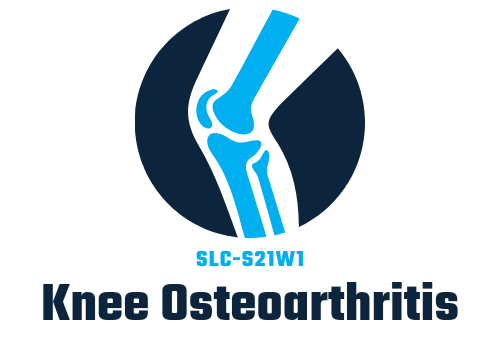Steemit Learning Challenge-S21W2; Knee Osteoarthritis"

All work and no play, makes Ninapenda a dull girl so I thought I should join the class to enable my knee. It was a beautiful experience that I don't wish to stop soon because of the after- results.
Discuss the benefits & challenges associated with digital classrooms as compared to physical classrooms |
|---|
Knee osteoarthritis is a condition that damages the knee joint. While it is often seen in older adults, more people are experiencing it due to a lack of physical activity. This condition involves the slow breakdown of the cartilage in the knee. People with this condition may feel pain, stiffness when moving, and sometimes swelling.
We noticed that the bones are breaking down, causing them to rub against each other, which leads to knee problems and discomfort. As this damage worsens with movement, symptoms often get worse. However, we can lessen these issues through lifestyle changes, physical therapy, medication, and sometimes surgery.
To go a bit deeper, knee osteoarthritis is categorized by its location, the severity of damage, and any underlying conditions. These are the three main areas to consider for a possible diagnosis.
Classification by location
We have Patellofemoral Osteoarthritis, which affects the cartilage under the kneecap. When this cartilage is damaged, it is known as Patella OA.
Next, there is a condition where the cartilage between the thigh bone and shin bone is affected. This is called Tibiofemoral Osteoarthritis.
Finally, we have a more complex issue where the cartilage under the kneecap, thigh, and shin bones is all damaged. This is known as Bicompartmental Osteoarthritis.
Classification by Severity
The Mild Osteoarthritis stage features slight cartilage loss and some narrowing of the joint space, but there are no clear signs of discomfort.
The Moderate Osteoarthritis stage shows clear cartilage loss and joint space narrowing, with pain levels higher than in the mild stage.
The Severe Osteoarthritis stage displays significant symptoms, with noticeable cartilage loss and joint space narrowing during evaluation.
Classification by Underlying Causes
This classification is based on how the disease develops. There are two main types:
Primary Osteoarthritis: This type is mostly related to aging.
Secondary Osteoarthritis: This type mainly results from injuries, obesity, and genetic factors.
How would you diagnose a knee OA? Any clinical investigation or assessment tests? |
|---|
We can diagnose knee Osteoarthritis by:
Medical History Review:
This involves gathering the patient's medical history, including any past knee injuries, surgeries, and current symptoms during the examination.
Physical Examination:
This includes checking the knee's range of motion, observing any swelling and tenderness, and assessing the pain level during movement.
Laboratory Evaluation:
This process may advance the observations made in the previous two assessments. MRI and X-ray examinations are essential for providing a clearer understanding of the extent of damage and the current condition. Additionally, laboratory testing serves as another method to accurately determine the specific type of disease.
Try to practice at least 4 exercises that you have learned from the lesson. Share images, gifs or videos while practising |
|---|
Heel Slides exercise
William Flexion ( Knee to Chest exercise)
Knee Isometrics ( Knee Flexion )
Calf & Hamstring Stretch
Share your review after performing these exercises either on healthy individual or patient |
|---|
This exercise is a good way to enhance our overall body function. The knee, hip, and ankle are key parts that help us move well.
I noticed a slight feeling in my knee, indicating that I had done some work. It felt very relieving and refreshing. Of course something has happened to my joints during this exercise.
I invite @nancy0 @ukagod @tripple-a
https://x.com/ninapenda2023/status/1854575159404875823?t=aBbunaN_onZ91MHMZ4KaSQ&s=19
Thank you for understanding the lesson and sharing your assignment; I hope that you will enjoy this week's lesson and try to implement it in your life if you see any such case.
Observations
Task 1 (2.9/3)
You have shared a great knowledge about knee osteoarthritis, types on the basis of it's causes, location and severity. But you have to add the stages of knee OA too to better explain this to other users. I appreciate your effort.
Task 2 (2.5/3)
In the second question, you tell us about how you assess the patient of knee OA by doing the physical examination, history taking, investigations of patients. But it would be better if you add 1 or 2 special tests to confirm the diagnosis. Good.
Task 3 (3.7/4)
You try the heel slides, calf & hamstring stretch, William Flexion ( knee to chest exercise), Knee Isometric ( Knee flexion ). But while performing exercises you have performed them in slow mode especially heel slides as you have to press on ground a bit and then slowly move your heel. Remember always apply heating pad before performing these exercises. I appreciate your efforts.
Overall you made a good attempt to answer all the questions. I appreciate your efforts. But next time try to avoid the above written suggestions. Keep learning and try to implement your knowledge to the people suffering from any knee Osteoarthritis. Thank you.